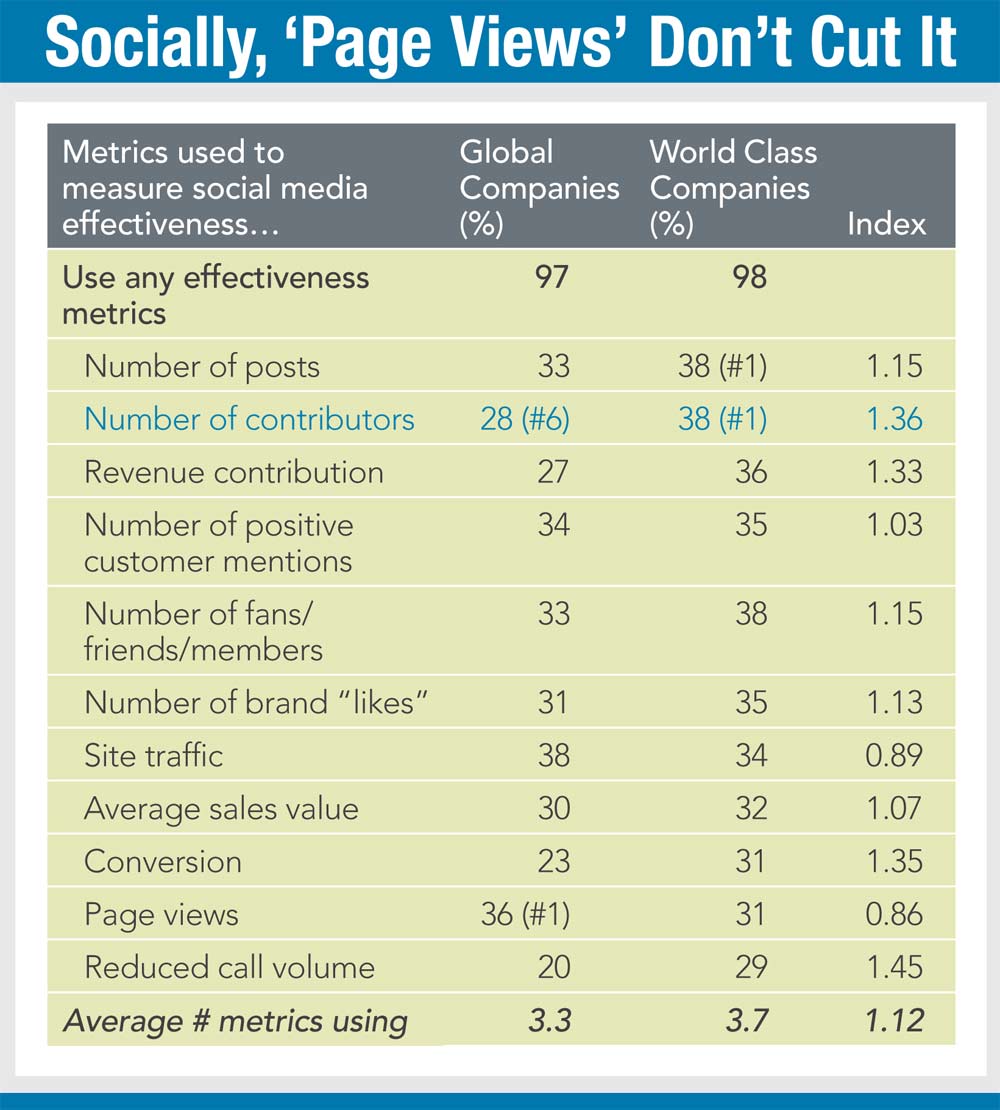 |
| A global study, released in Oct. 2011, finds that while page views are the No. 1 barometer of ROI for the rank and file, contributors—a more solid ROI metric—is a favorite among “world class” companies. Source: Weber Shandwick/Forbes Insights |
A new study on what makes brands social, released this month, finds that global companies have got social media ROI metrics mostly wrong. The Weber Shandwick / Forbes Insights “Brand Sociability” study of 1,897 senior executives across 50 countries shows that they are stuck on social metrics like “page views” that don’t reflect true return on investment.
BOTTOM-LINE IMPACT
This is a trend that Margot Sinclair Savell, VP of measurement and analyics at Weber Shandwick, would like to nip in the digital bud. “We’d like to see more organizations using analytics to determine how their social media efforts, and those of their contributors, drive brand advocates, customer loyalty and revenue,” she says. In other words, companies that don’t just measure communications, but measure the impact on their bottom line.”
The positive from these findings (detailed in the chart) is that most organizations know social media measurement is important, says Savell. Nearly all survey respondents (97%) are using some kind of metric to evaluate their social media activities.
Page views are definitely not part of Nick Panayi’s social measurement program at business and technology solutions company CSC. As director of global brand and digital marketing, Panayi’s metrics skew toward world class.
“We look at a very broad spectrum of social media metrics, and are increasingly looking to tie those metrics to more business outcomes,” says Panayi.
Specifically, CSC looks to connect social engagement with demand generation conversion and lead development. “Knowing that social media serves best as a relationship cultivation tool rather than a direct demand generation tool, this motivates us to look at the combined effect of multiple marketing touches, including social media, on lead conversion,” says Panayi.
Another social measurement area that Panayi spends time on is sentiment analysis. “Understanding whether or not the social buzz we generate moves the sentiment dial in any direction helps us determine whether or not we have to dial up or dial down the level of edginess that usually yields a strong viral effect.”
GO BEHIND THE NUMBERS
These findings underline how brands that are ahead of the curve realize that the numbers only tell part of the story, notes Savell. “Quantitative metrics without context are meaningless,” she says. A solid measurement program provides qualitative analysis that looks behind the numbers to understand successes and missed opportunities and offers actionable findings that can help move the strategic needle in the future. PRN
[Editor’s Note: Learn from social media experts about getting optimal returns from Twitter at PR News’ Twitter Conference, set for Nov. 10 in Las Vegas. For more information go to prnewsonline.com/conferences/twitterconference-nov2011.html.]
CONTACT:
Margo Sinclair Savell, [email protected]; Nick Panayi, [email protected].
